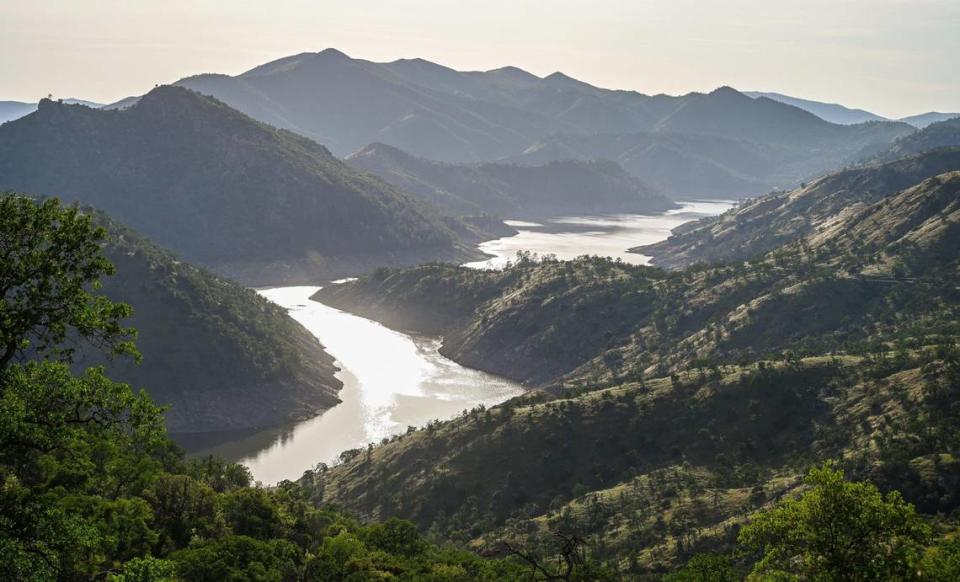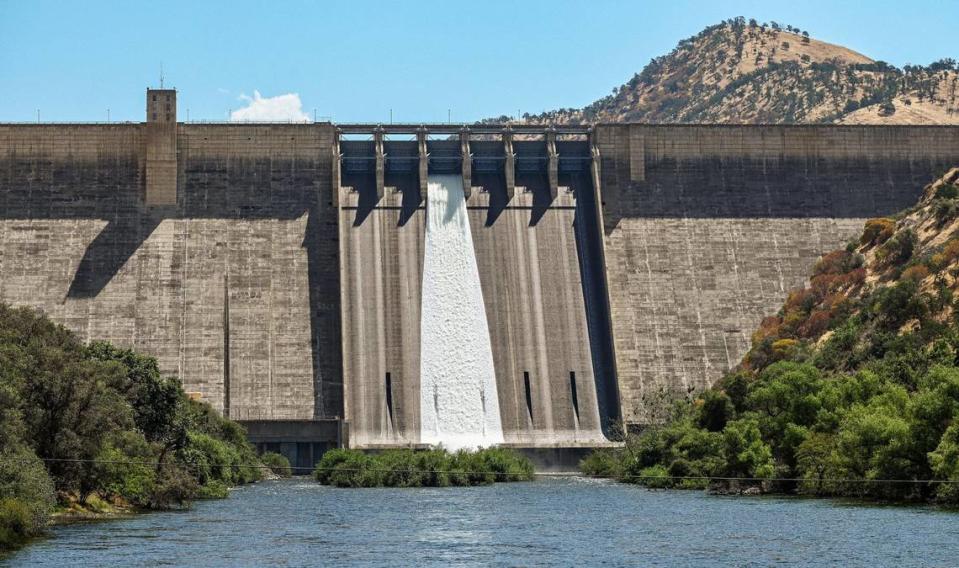Two dams near Fresno are spilling as designed. No reason to get freaked out | Opinion
When dam operators of the foothill reservoirs outside Fresno have no choice but to release water through their spillways, some folks get a little nervous.
No reason to, really. As long as those spillways are structurally sound — which admittedly in California is no longer a given — everything is operating as designed.
Last week, water spilled from the top of 319-foot tall Friant Dam for the first time since July 2017 and second since 2011 as the state endured two multiyear droughts.
The man-made waterfall is visible for miles whether you drive north from Fresno along Friant Road or climb atop a bluff with a clear view of the dam. Watching the waters of Millerton Lake cascade down its concrete face is an unusual sight, but no reason for alarm.
No less aesthetically pleasing (but not as visible from the surrounding area) is Pine Flat Dam, which stands roughly 28 miles east of town and has been spilling since late June. Also for the first time in six years.
Opinion
Still, Friant Dam, which impounds the San Joaquin River, and Pine Flat Dam, which captures the Kings River, are designed and managed so differently that any discussion of the two must be separated.
So let’s do that.
Built by the Bureau of Reclamation in 1942 as part of the Central Valley Project, Millerton Lake stores 520,528 acre-feet of water under normal conditions. During flood events, three 100-foot wide, 18-foot tall buoyancy-operated gates located in the spillway’s upper recesses increase that capacity by some 30,000 acre-feet.
Which explains why Millerton Lake, in recent days, is listed as more than 100% full.
“Underneath each of those gates are giant bladders called Obermeyer bladders, and we pump air into each one of them like a balloon,” said Michael Jackson, the Bureau of Reclamation’s regional office manager. “As each balloon gets bigger, it lifts the gate up so that more water can be stored behind the dam.”
By inflating or deflating the three gates, which are engineered to be leak proof, dam operators also control the amount of water flowing through the spillway.
On Tuesday, according to Millerton’s daily operations report, the average spillway discharge over the previous 24 hours stood at 1,350 cubic feet per second. (That’s compared to 4,653 cfs being released into the Friant-Kern Canal, 1,197 cfs into the Madera Canal and 1,997 cfs into the San Joaquin River from four jet valves at the base of the dam.)
However, the current spillway releases of 1,350 cfs are nowhere near its listed maximum capacity of 83,000 cfs. Allowing dam operators plenty of wiggle room.
“We open and close each gate based on whatever calculation determines how much water we want flowing into the spillway,” Jackson said.
Even though Millerton Lake is full to the brim while plenty of snow remains in the upper San Joaquin drainage, the most severe threat of flooding has passed. Operators have a pretty good idea how much snowmelt is headed their way, when it will arrive and adjust daily discharge levels into the two irrigation canals and the river accordingly.
Millerton Lake storage is also impacted by water levels of several upstream reservoirs with a combined storage of 610,000 acre-feet built for hydroelectricity production. Those are currently 92% full, including breathtakingly beautiful Florence Lake at the end of Kaiser Pass Road, which recently spilled over its dam for the first time in decades.
An unusual event and one that creates perilous downstream conditions (campgrounds at Mono Hot Springs remain closed due to high water levels on the South Fork of the San Joaquin), but nothing to sound the alarm.
The same is true at Pine Flat Lake, the serpentine-shaped irrigation and flood control reservoir built in 1954 and operated by the U.S. Army Corps of Engineers.
Pine Flat Lake stores 1 million acre-feet of water, nearly twice as much as Millerton, and in its seven decades has never exceeded capacity. When lake levels reach 85%, as was the case three weeks ago, dam operators open one or more of six 36-foot wide, 42-foot tall Tainter gates built into the dam’s original construction.
Water that pours through the gates and down the spillway is then dispersed into the river channel by a giant flip bucket at the base of the dam, which reduces erosion and creates a ton of spray and mist.
“Such spillway use is merely another means of safely releasing water to the river,” Kings River Watermaster Steve Haugen said. “Pine Flat Dam has never exceeded (its) gross pool. … The spillway gates are built of thick steel and are strong enough to hold stored water but can be raised as much as necessary.”
On Tuesday afternoon, Pine Flat Lake exceeded 96% capacity as its waters continue to rise due to snowmelt from the recent heat wave. Even so, in its latest order issued Monday, operators reduced flood releases into the Kings River by 500 cfs.
Why would operators do that? Because they’re confident in how much water they can safely store thanks to accurate forecasts and a spillway system that operates and functions as designed.
Yes, water flowing down a towering concrete slab and crashing into a river makes for an unusual sight. But that by itself is nothing to get worked up about.






